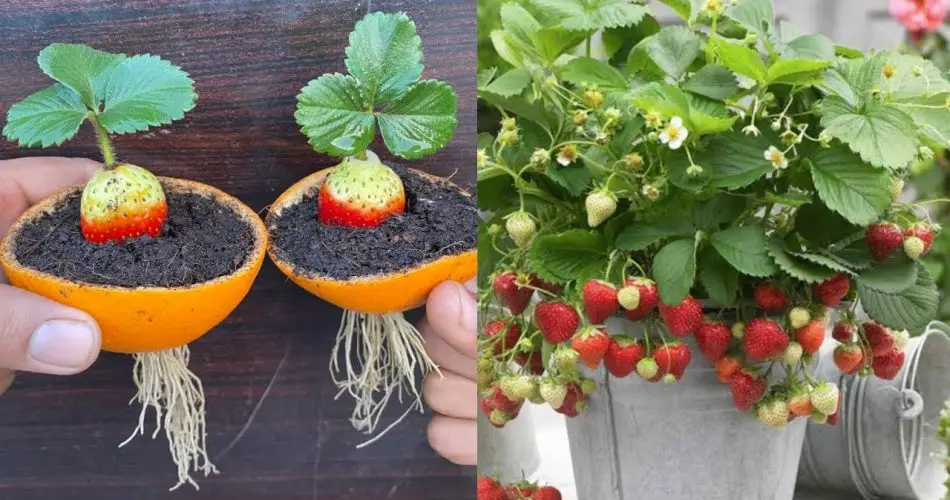
Growing strawberries from strawberry fruit can be a fun and rewarding process. While there’s no guaranteed method for 100% success, here’s a relatively effortless method that often yields good results:
- Selecting the Right Strawberry: Choose a ripe, healthy strawberry from a variety you enjoy. Organic strawberries are preferred to avoid any potential chemical residues.
- Extracting Seeds: Gently mash the ripe strawberry in a bowl. Then, rinse the pulp under running water while gently rubbing the seeds between your fingers. This process separates the seeds from the pulp.
- Seed Soaking: Place the extracted seeds in a small dish of water. Let them soak for about 24 hours. This helps to soften the outer layer of the seeds and can improve germination rates.
- Seed Drying: After soaking, spread the seeds out on a paper towel or cloth and let them air dry for a few hours. Make sure they are completely dry before proceeding.
- Preparing Seed Trays or Pots: Fill seed trays or small pots with a high-quality potting mix. Make sure the soil is moist but not waterlogged.
- Planting Seeds: Sprinkle the dried strawberry seeds evenly over the surface of the soil in the trays or pots. Press them gently into the soil, but don’t bury them too deep—just enough to ensure good contact with the soil.
- Covering Seeds: Lightly cover the seeds with a thin layer of soil or vermiculite. This will help retain moisture and protect the seeds as they germinate.
- Watering and Moisture: Water the soil gently, ensuring it stays consistently moist but not waterlogged. You can use a spray bottle to avoid disturbing the seeds. Cover the trays or pots with plastic wrap or a clear plastic lid to create a mini greenhouse effect, retaining moisture and warmth.
- Location and Light: Place the trays or pots in a warm, sunny spot, such as a windowsill. Ensure they receive at least 6-8 hours of sunlight per day. If natural light is insufficient, you can use grow lights to supplement.
- Germination and Care: Germination typically takes 1-3 weeks. Once the seedlings emerge, remove the plastic cover and continue to water them regularly, ensuring the soil remains consistently moist. Thin out the seedlings if they become overcrowded, leaving only the strongest ones.
- Transplanting: Once the seedlings have developed several sets of true leaves and are sturdy enough to handle, transplant them into larger pots or directly into the garden bed. Space them about 8-12 inches apart in well-draining soil with plenty of sunlight.
- Maintenance: Continue to water the plants regularly, especially during dry spells. Mulch around the plants to retain moisture and suppress weeds. Fertilize sparingly with a balanced fertilizer according to package instructions.
With patience and proper care, your strawberry plants should grow and eventually produce delicious fruit. Remember that growing plants is a natural process and may not always yield 100% success, but following these steps can greatly increase your chances of success.
